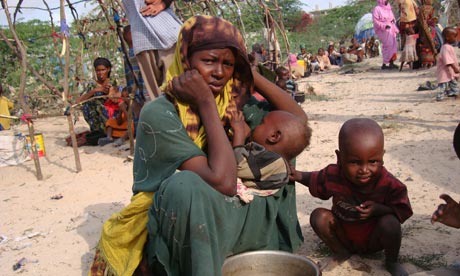
Just one of 20,000 Somali refugees who have arrived in Kenya this week…
The worst drought in 60 years in the Horn of Africa has sparked a severe food crisis and high malnutrition rates, with parts of Kenya and Somalia experiencing pre-famine conditions, the United Nations has said.
More than 10 million people are now affected in drought-stricken areas of Djibouti, Ethiopia, Kenya, Somalia and Uganda and the situation is deteriorating, it said.
Did you even know?
I didn’t.
I don’t think most people in the Western World had or have any idea.
It is not that it is not happening, it is.
It is that, like the tree that falls in the forest, if 10 million people are facing starvation but on crew from CNN sees it, did it still happen?
It used to be that the only thing the world knew about was that which the assignment desk at CNN or The BBC or ABC News decided to cover.
And coverage meants sending a crew and correspondent, which is very expensive.
(It’s one thing to spend $10 million to cover the Royal Wedding, but another to spend money to cover 10 million people suffering starvation, but that’s another story).
The United Nations knows this story well.
For the people who work for The United Nations High Commissioner for Refugees, this is what they see every day.
But almost no one else does.
Almost no one else does because a tiny handful of people in NYÂ and London are effectively the gatekeepers for the information the rest of the world gets to see.
But what if we could change that?
What if we could give all of those UN field workers who are in places like Tunis or Darfur or Kenya video cameras and laptops and teach them to shoot and cut broadcast quality stories and offer them to CNN or ABC or The BBC or just upload them to the web?
Great idea, huh?
Well that’s what we’re doing.
It’s a chance to use video to save lives.
And change the world.
Sometimes people in the TV business like to say ‘it isn’t brain surgery’.
Sometimes it’s something even more important.